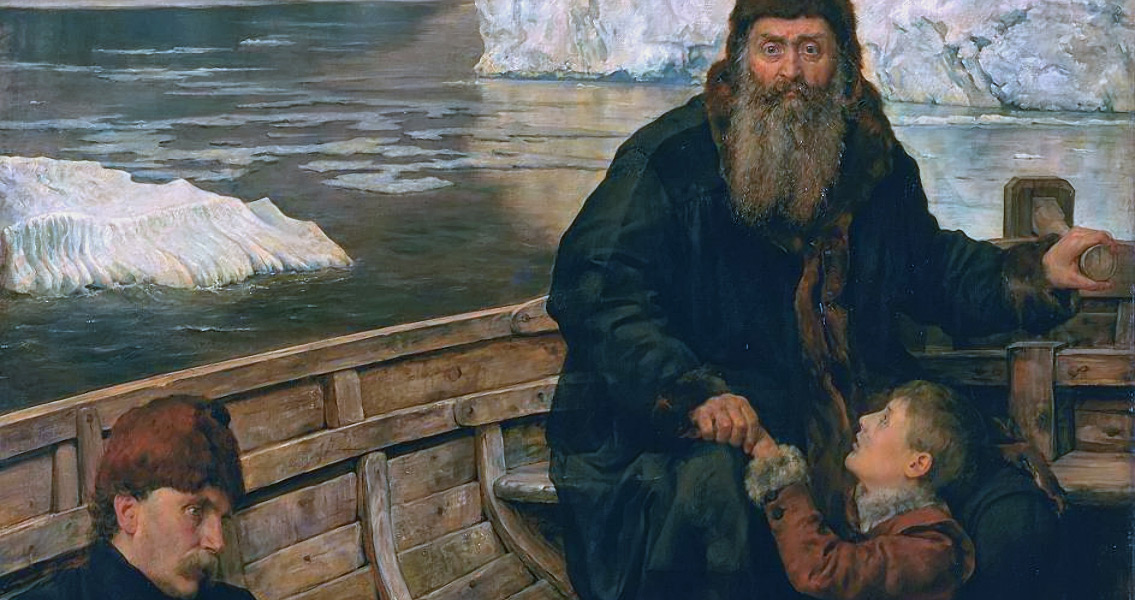<![CDATA[With their ship stuck in ice in what is now known as the Hudson Bay, the crew of the Discovery mutinied on 22nd June, 1611. The vessel’s captain, famed explorer Henry Hudson; his teenage son and seven others were all overpowered by the ship’s crew and forced into a small, uncovered boat. Set adrift with few supplies in the harsh conditions, Hudson and the others were never seen again. The only hint to their fate came almost twenty years later, in 1631, when another expedition through the region found the remains of a shelter that could have been erected by Hudson and his eight companions. Hudson, for whom Hudson Bay is named after, was embroiled in an obsessive hunt for a Northwest Passage, a sea route through the North American continent that would connect Europe to the lucrative trading opportunities in Asia. The 55-ton Discovery had set off from London on 17th April, 1610, stopping briefly in Iceland before making its way into the Hudson Bay in August. For this expedition, Hudson had his ship cruised around the southern section of the Hudson Bay, searching for an outlet into the Pacific. Scouring the region and finding nothing, Hudson nevertheless continued his search. When the wintry Arctic conditions struck however, tensions quickly rose among the crew when the ship became trapped in the ice, with its supplies dwindling. Rumours started to spread among the crew that Hudson had started to hoard food, saving it for his favoured crew members while depriving others. He demoted Robert Juet, the ship’s first mate, while also getting into a heated dispute with another officer, Henry Green. Conspiracy began to spread around the ship, with Green and Juet recruiting men to their cause. In June, while the ship prepared to commence its journey back to Europe, the mission a failure, the mutiny took place and Hudson along with his supporters were apprehended and then set adrift. At least, that was the account provided by the surviving crew members. The Discovery eventually made its way back to England, but without Juet and Green. The surviving crew members claimed that the two mutiny leaders had been killed in a battle with Native Americans at some point on the journey home. This of course adds an interesting twist to the tale of the mutiny, raising the possibility that the crew perhaps altered certain elements of the story, or lied about Juet and Green’s fate, in order to shift blame away from themselves. Some of those who made it back were eventually tried for mutiny, but all were ultimately acquitted due to a lack of evidence. Little is known about Hudson’s early life. Likely born sometime late in the sixteenth century, in England, he earned a reputation as a formidable sailor and, ultimately, one of the world’s greatest explorers. How he gained such skill as a seafarer is unknown, with precious few details about his life prior to his first expedition as a ship’s commander in 1607 available. He embarked on four major voyages in his career, including the fateful final one. All were driven by the same aim, of finding a new passage between Europe and Asia, and with countries and businesses fighting to unearth new trade routes, funding for these ambitious expeditions was seldom hard to come by. His first two trips attempted to find a Northeast Passage, the second ultimately blocked by thick ice north of Russia. Giving up on ever finding an eastern route, he soon turned his attention to the North American continent, embarking on his first voyage there in 1609. Although ultimately failing, Hudson inspired a host of later explorers to search North America for the fabled Northwest Passage. His name, meanwhile, can be found on waterways, bridges and even towns across the continent, a mark of the esteem he is held in.]]>
Mutiny Sets Henry Hudson Adrift
